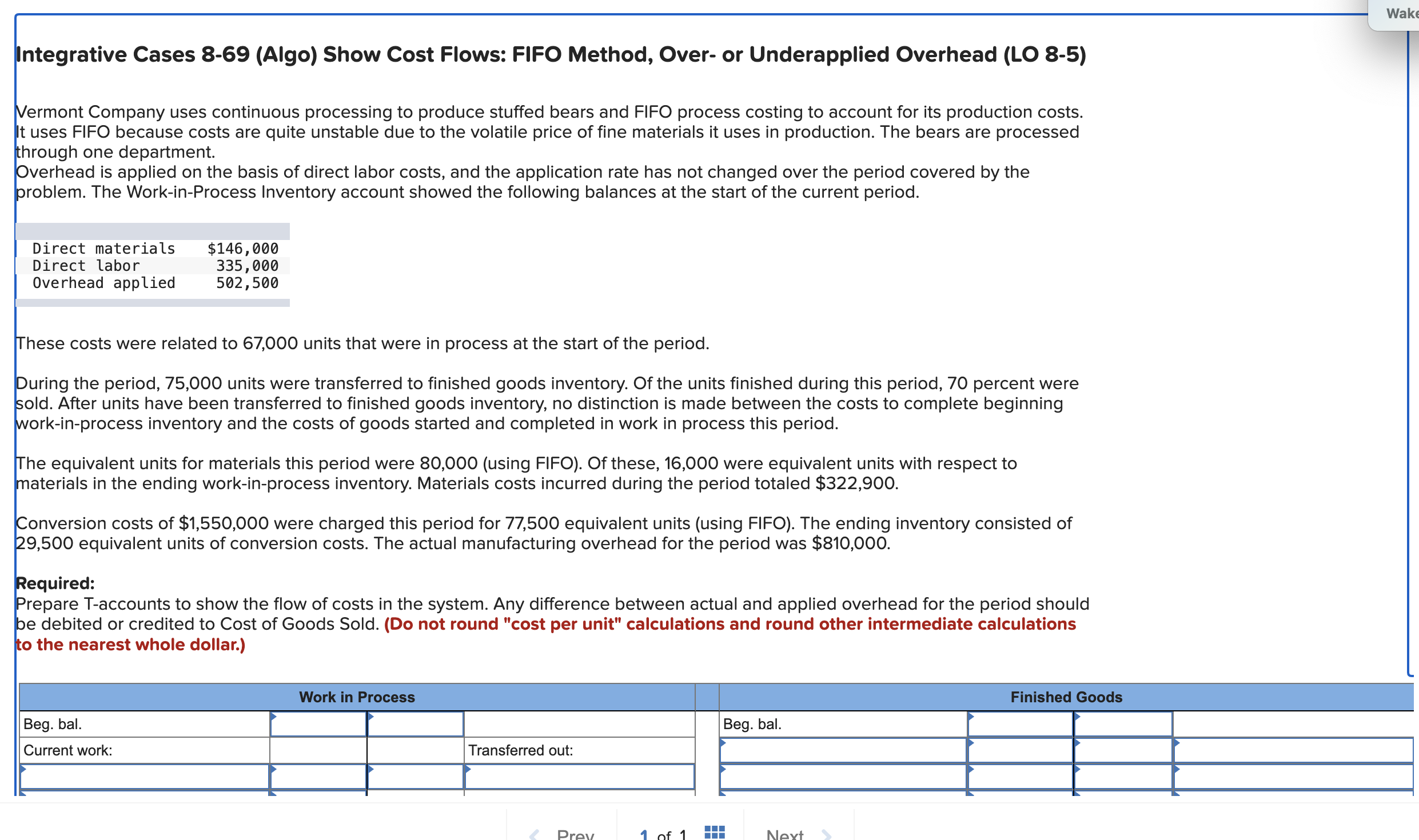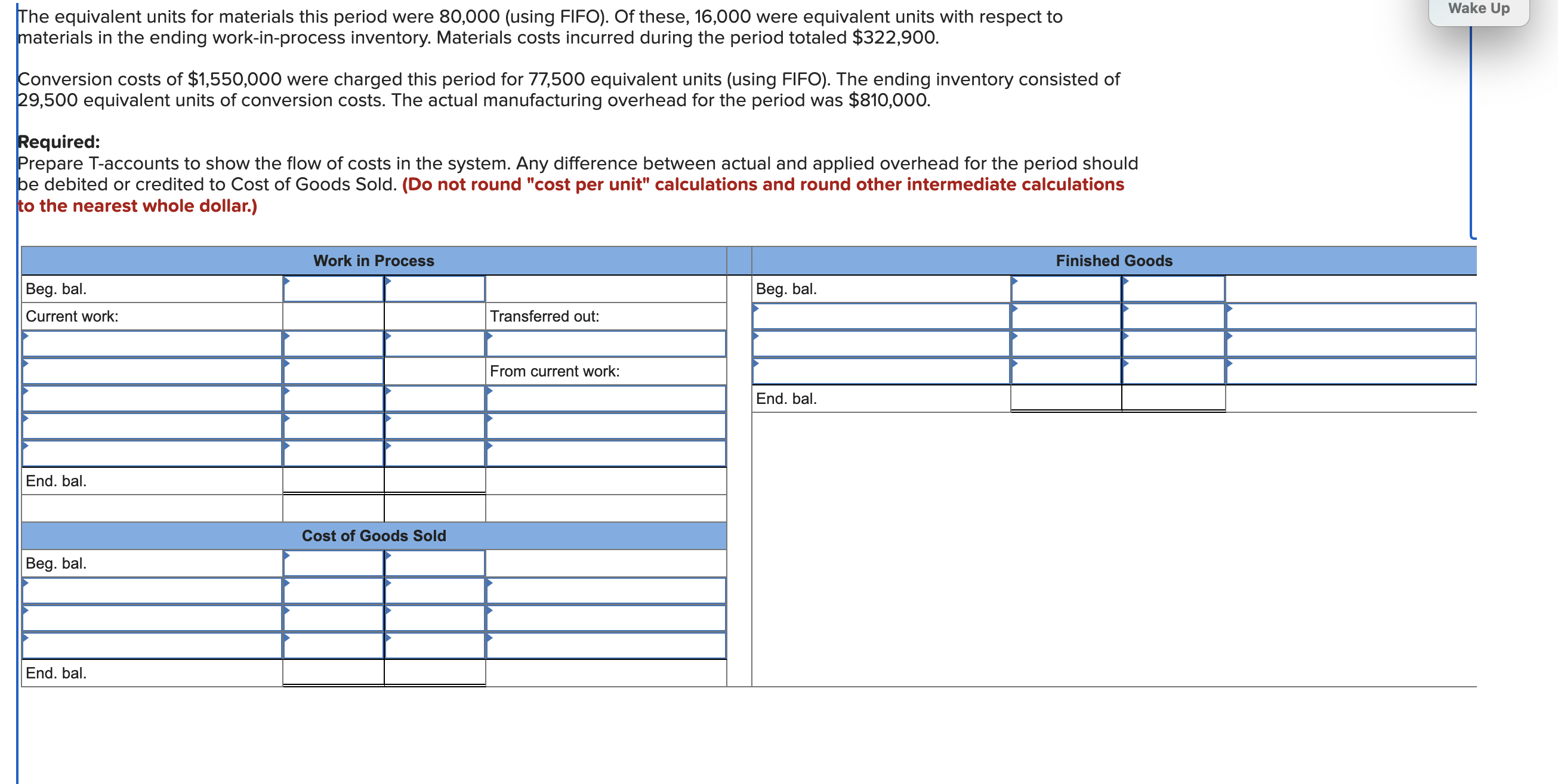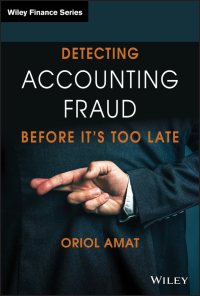Answered step by step
Verified Expert Solution
Question
1 Approved Answer
Integrative Cases 8-69 (Algo) Show Cost Flows: FIFO Method, Over- or Underapplied Overhead (LO 8-5) Vermont Company uses continuous processing to produce stuffed bears and

 Integrative Cases 8-69 (Algo) Show Cost Flows: FIFO Method, Over- or Underapplied Overhead (LO 8-5) Vermont Company uses continuous processing to produce stuffed bears and FIFO process costing to account for its production costs. It uses FIFO because costs are quite unstable due to the volatile price of fine materials it uses in production. The bears are processed through one department. Overhead is applied on the basis of direct labor costs, and the application rate has not changed over the period covered by the problem. The Work-in-Process Inventory account showed the following balances at the start of the current period. These costs were related to 67,000 units that were in process at the start of the period. During the period, 75,000 units were transferred to finished goods inventory. Of the units finished during this period, 70 percent were sold. After units have been transferred to finished goods inventory, no distinction is made between the costs to complete beginning work-in-process inventory and the costs of goods started and completed in work in process this period. The equivalent units for materials this period were 80,000 (using FIFO). Of these, 16,000 were equivalent units with respect to materials in the ending work-in-process inventory. Materials costs incurred during the period totaled $322,900. Conversion costs of $1,550,000 were charged this period for 77,500 equivalent units (using FIFO). The ending inventory consisted of 29,500 equivalent units of conversion costs. The actual manufacturing overhead for the period was $810,000. Required: Prepare T-accounts to show the flow of costs in the system. Any difference between actual and applied overhead for the period should be debited or credited to Cost of Goods Sold. (Do not round "cost per unit" calculations and round other intermediate calculations to the nearest whole dollar.) The equivalent units for materials this period were 80,000 (using FIFO). Of these, 16,000 were equivalent units with respect to materials in the ending work-in-process inventory. Materials costs incurred during the period totaled $322,900. Conversion costs of $1,550,000 were charged this period for 77,500 equivalent units (using FIFO). The ending inventory consisted of 29,500 equivalent units of conversion costs. The actual manufacturing overhead for the period was $810,000. Required: Prepare T-accounts to show the flow of costs in the system. Any difference between actual and applied overhead for the period should be debited or credited to Cost of Goods Sold. (Do not round "cost per unit" calculations and round other intermediate calculations to the nearest whole dollar.)
Integrative Cases 8-69 (Algo) Show Cost Flows: FIFO Method, Over- or Underapplied Overhead (LO 8-5) Vermont Company uses continuous processing to produce stuffed bears and FIFO process costing to account for its production costs. It uses FIFO because costs are quite unstable due to the volatile price of fine materials it uses in production. The bears are processed through one department. Overhead is applied on the basis of direct labor costs, and the application rate has not changed over the period covered by the problem. The Work-in-Process Inventory account showed the following balances at the start of the current period. These costs were related to 67,000 units that were in process at the start of the period. During the period, 75,000 units were transferred to finished goods inventory. Of the units finished during this period, 70 percent were sold. After units have been transferred to finished goods inventory, no distinction is made between the costs to complete beginning work-in-process inventory and the costs of goods started and completed in work in process this period. The equivalent units for materials this period were 80,000 (using FIFO). Of these, 16,000 were equivalent units with respect to materials in the ending work-in-process inventory. Materials costs incurred during the period totaled $322,900. Conversion costs of $1,550,000 were charged this period for 77,500 equivalent units (using FIFO). The ending inventory consisted of 29,500 equivalent units of conversion costs. The actual manufacturing overhead for the period was $810,000. Required: Prepare T-accounts to show the flow of costs in the system. Any difference between actual and applied overhead for the period should be debited or credited to Cost of Goods Sold. (Do not round "cost per unit" calculations and round other intermediate calculations to the nearest whole dollar.) The equivalent units for materials this period were 80,000 (using FIFO). Of these, 16,000 were equivalent units with respect to materials in the ending work-in-process inventory. Materials costs incurred during the period totaled $322,900. Conversion costs of $1,550,000 were charged this period for 77,500 equivalent units (using FIFO). The ending inventory consisted of 29,500 equivalent units of conversion costs. The actual manufacturing overhead for the period was $810,000. Required: Prepare T-accounts to show the flow of costs in the system. Any difference between actual and applied overhead for the period should be debited or credited to Cost of Goods Sold. (Do not round "cost per unit" calculations and round other intermediate calculations to the nearest whole dollar.) Step by Step Solution
There are 3 Steps involved in it
Step: 1

Get Instant Access to Expert-Tailored Solutions
See step-by-step solutions with expert insights and AI powered tools for academic success
Step: 2

Step: 3

Ace Your Homework with AI
Get the answers you need in no time with our AI-driven, step-by-step assistance
Get Started


